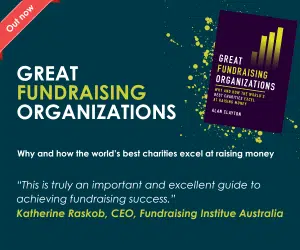Fundamentals of fundraising: why people give


Erica Waasdorp, Vice President Fundraising at DMW Worldwide in Plymouth, Massachusetts, looks at why people give to charities.
At a recent nonprofit conference, with some 1,000 attendees, I asked the question: Why do people give?
The bulk of the answers were only partly correct. “Because they want to contribute.” “Because they went to the college.” “Because they know the organisation.”
Advertisement
The real answer to the question is simply: people give because you ask them to give.
How you ask them is secondary. In person, via the telephone, through direct mail or internet. That’s where fundraisers like you and I come in, to look at revenue, cost and return on investment to determine the most cost-effective ways to ask that pertinent question.
Let’s look at the overall fundraising picture, the donor giving pyramid and the communications you’re sending to your supporters.
If you have many donors in the top of the pyramid, but your donor base is declining, you are probably not feeding in any new donors to replace those donors, who stopped giving (or passed away). Some organisations may see drops of 25 to 35% in their number of donors from year to year. It’s important to keep bringing in new donors, reactivating those who stopped giving and upgrading existing donors to higher levels to bring in more money for your nonprofit.
Review the breakdown of your donors. How many donors give less than £100. How many give more than £1,000? How often do you communicate with your donors now? What are you asking for? And, what are the trends?
Why do some organisations mail every two weeks and others only mail an appeal four times a year? How can they make money that way? It all depends on the mission of the organisation and the cases for giving. What it really comes down to is: how many stories can you tell that motivate your supporters to give and how many donors do you have that like to hear from you?
What have your supporters told you? If you ask them how many times they’d like to hear from you and you listen and ‘grant’ that wish, you may end up getting more money than ever before.
Use all the tools available to communicate with your donors. Mail, phone, in person, depending upon the giving level of the donor and his or her desire.
A few simple but practical ways to get more money from your donors:
- Add a reply envelope to a thank-you letter and see what happens. It’s not a hard ask and it may generate more than enough to pay for the thank-you letters.
- If you have a newsletter, put a reply envelope in it and see what happens. Most of the clients who tried it have made money on it.
- Make sure that you tell your donors what their money has done. It has been proven that by telling a donor the difference their contribution made, will tremendously help the next time.
Finally, there are golden rules, there are techniques that work for all organisations. However, every organisation is different and therefore, a final word of advice: test what works for your organisation, and track results to make the right decisions in the short- and the long-term.
Erica Waasdorp has been with DMW Worldwide since May 2000 where she works with clients ranging from the Salvation Army to the American Humane Association to international Animal Rescue, UK. Erica can be reached via ew*******@*******ct.com or 001 (774) 773- 1200 ext. 224.




